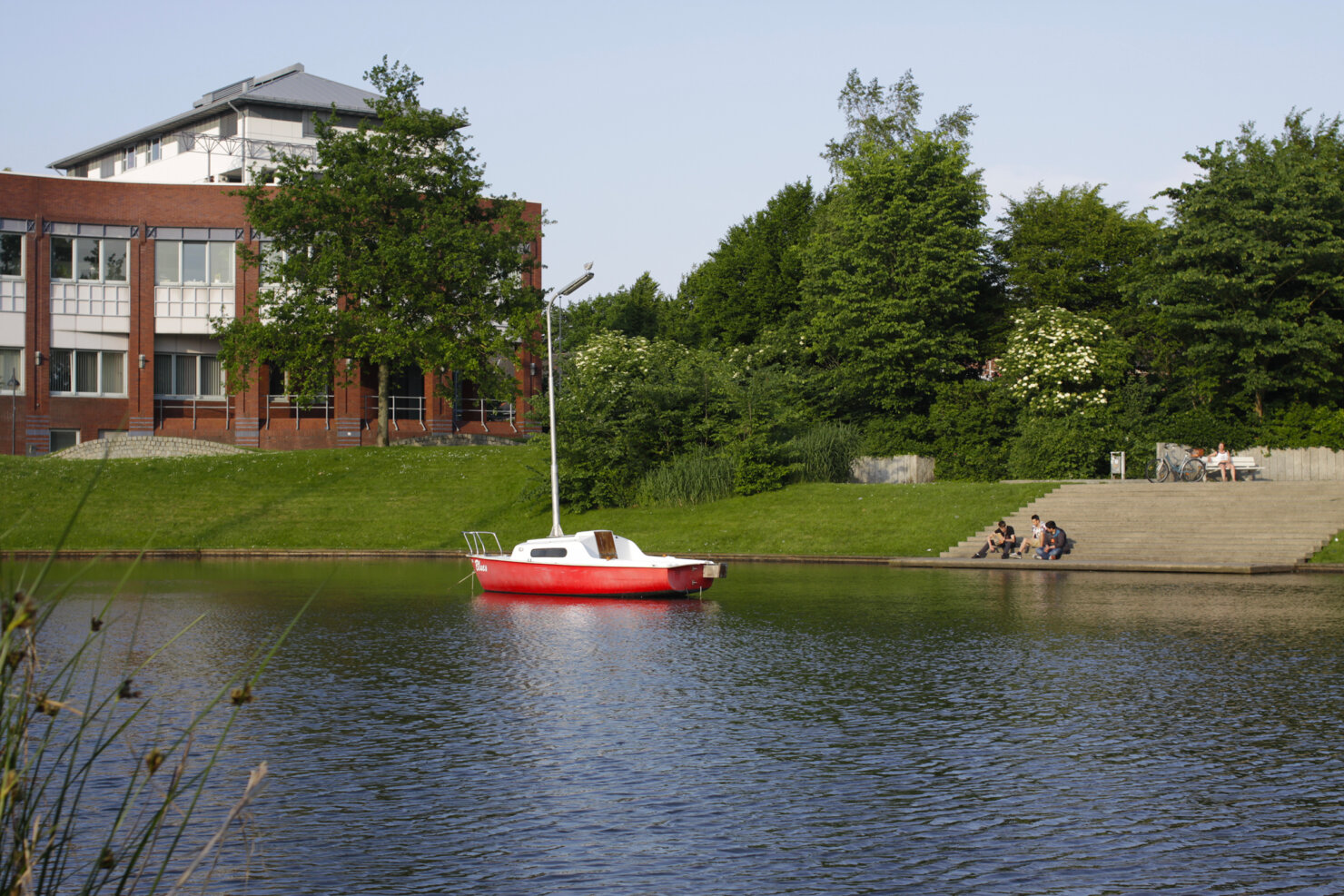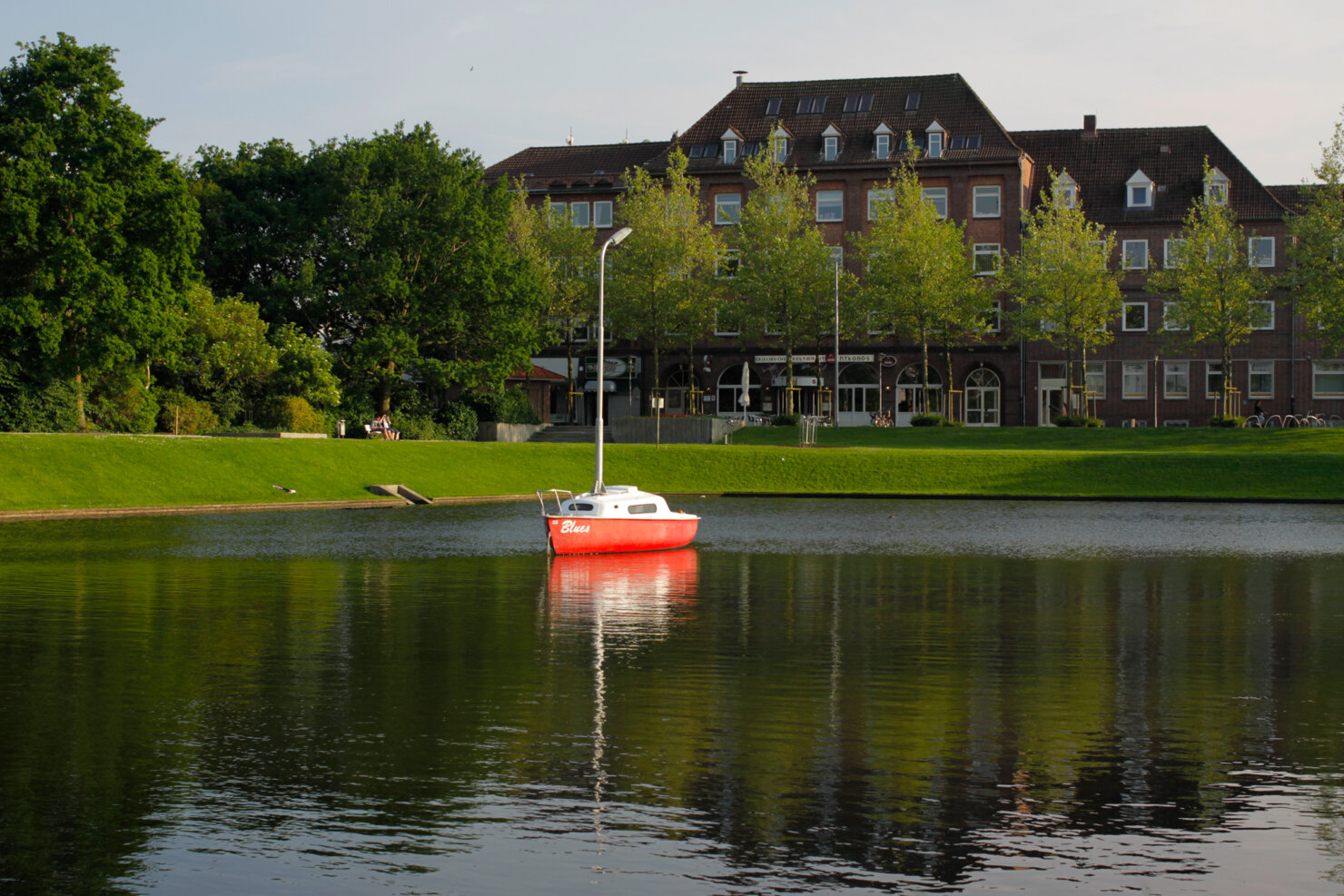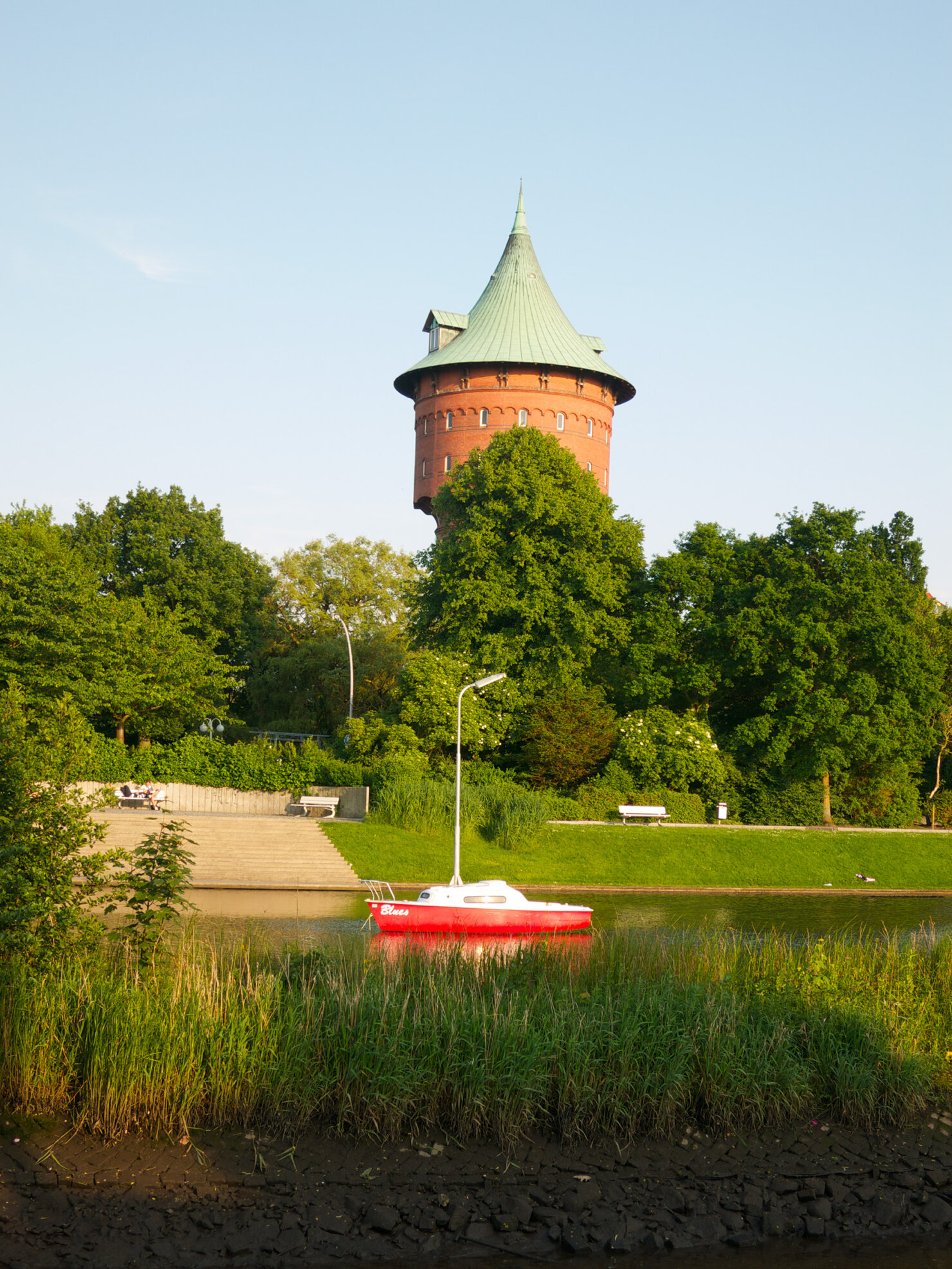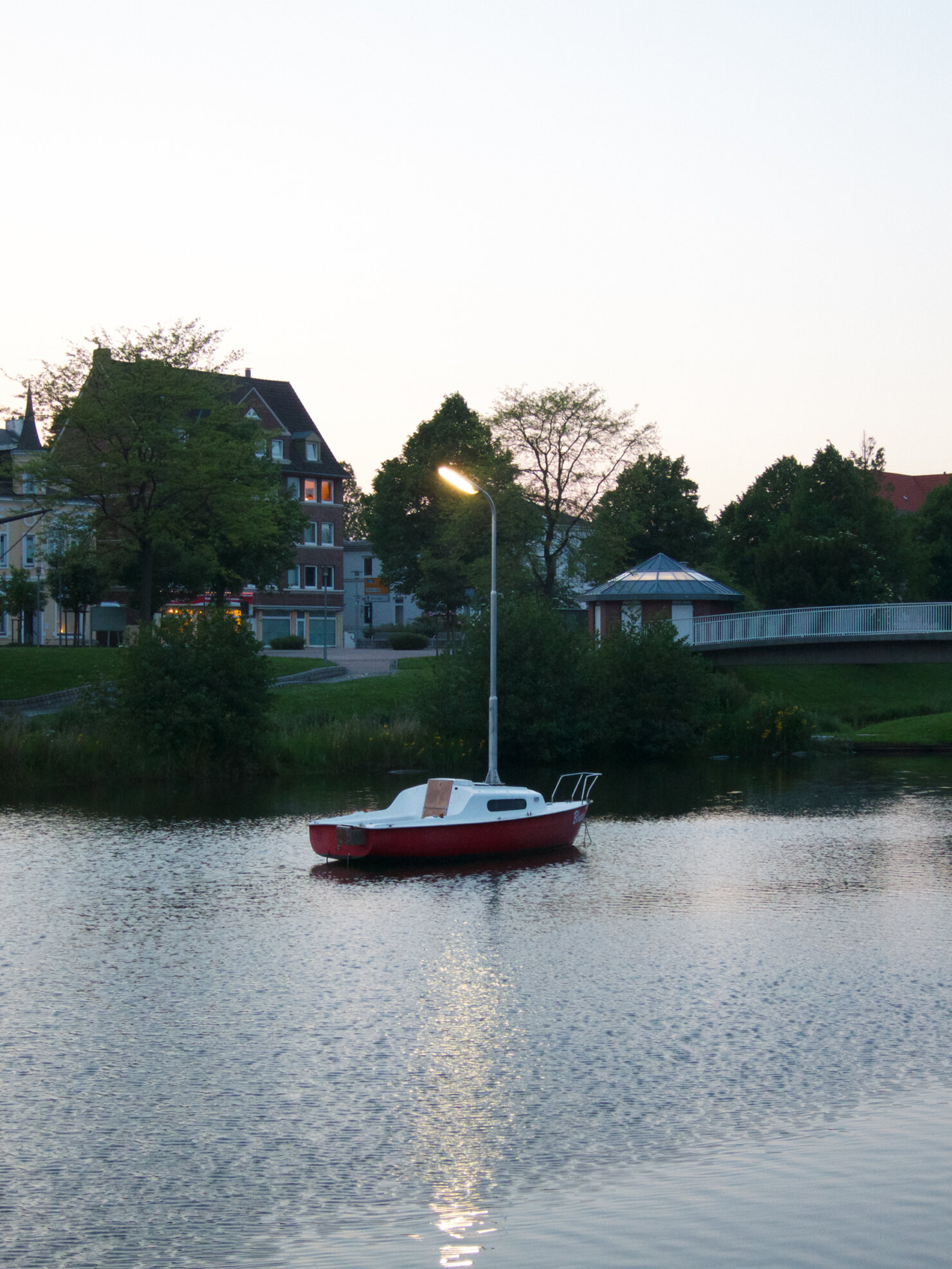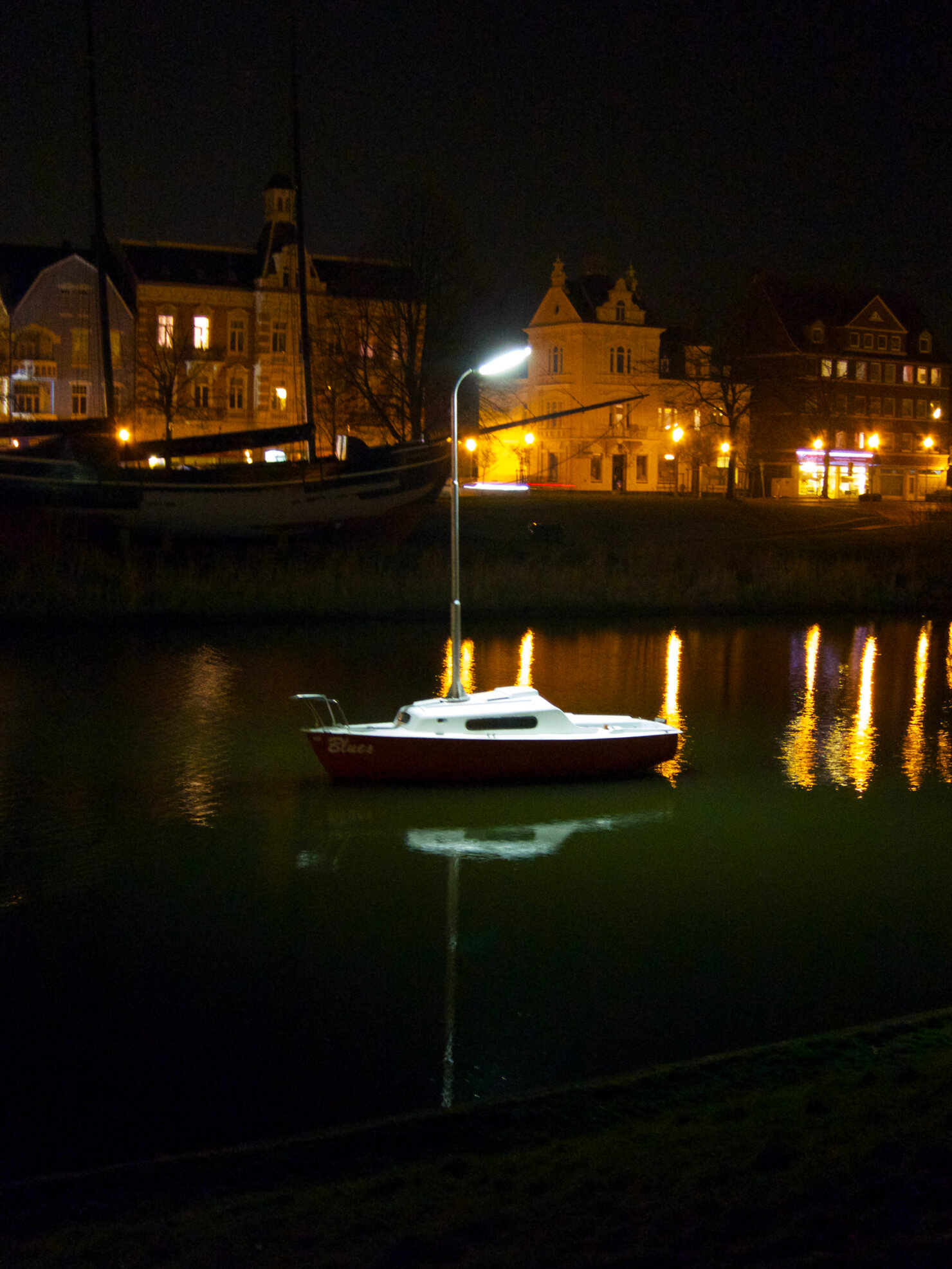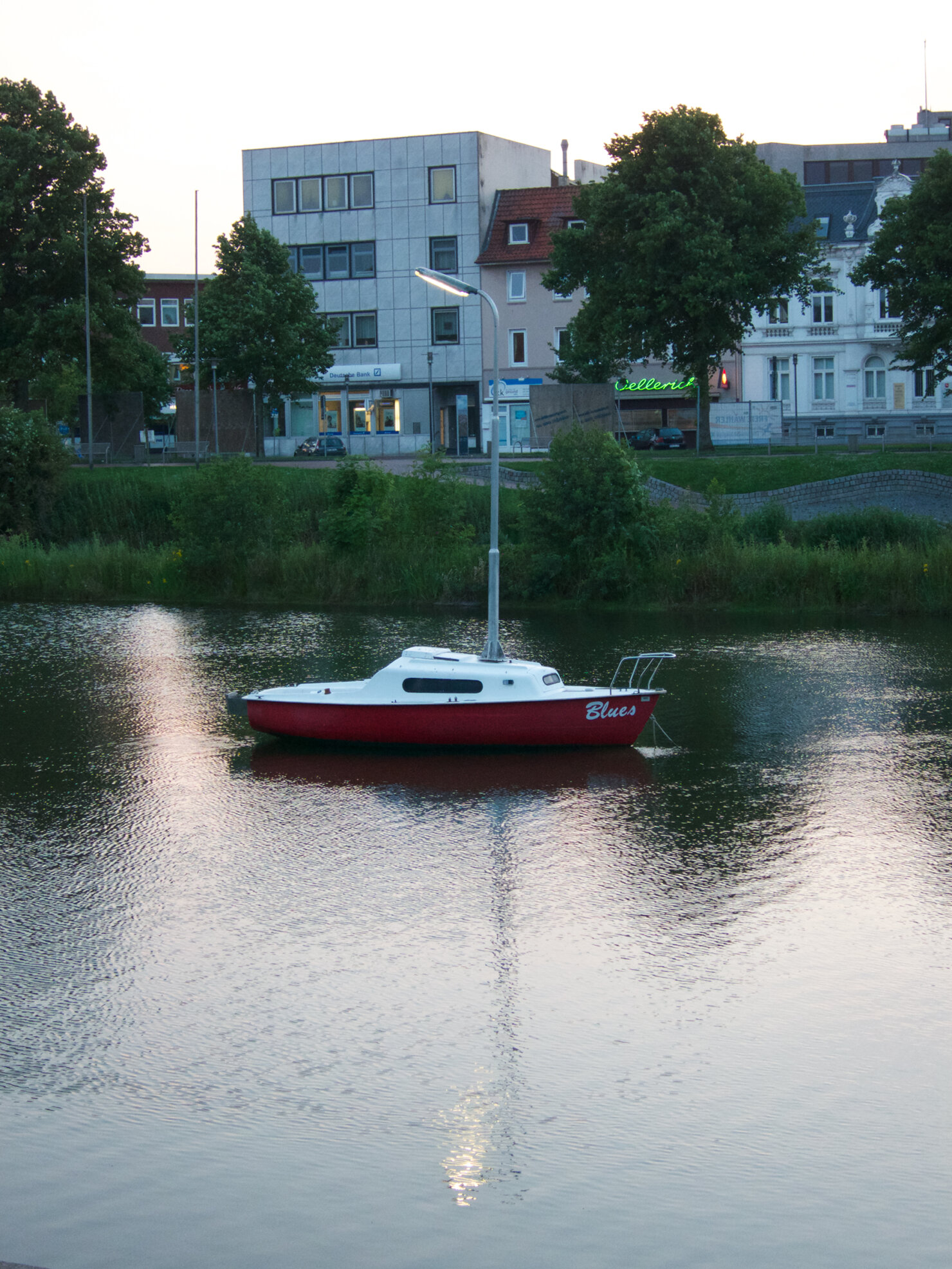Vier Bücher
03 April — 26 June, 2014
Cuxhavener Kunstverein, Cuxhaven, Germany
In his installation French artist Matthieu Martin makes an old sailboat meet a discarded lamp post. These two more or less commonplace objects appear primarily in public spaces, but there they can never be seen in such close proximity. Despite what seems to be a grotesque combination of water and land Martin creates a poetic image. In the middle of an artificial body of water in Cuxhaven’s city center, in the Schleusenprielbecken, the unmanned art piece rocks gently in the ripples. The lamp post which has been installed instead of the mast conforms to the rhythm of the city‘s lights. Thus, on first sight and despite its exposed position, the installation blends quietly into the cityscape.
This poetic, esthetic image is intensified by to the name that the boat‘s former owner gave it 25 years ago: “Blues“. As is commonly known, this term designating a musical form dates back to the English expression “I’ve got the blues” or “I feel blue”, which means “I am sad”. Moreover, an acoustic stimulus expands the image. It is triggered by the lamp’s cable inside of the mast whenever the boat moves. The sound can be heard sometimes more, sometimes less clearly.
When creating his art pieces, Matthieu Martin is driven by an interest in public spaces and their organization and design. The latter does not necessarily have to be apparent. By definition, public spaces are open to the public. Nevertheless, there are power relations that affect and organize these spaces and can be described as “invisible design” (Lucius Burckhardt). Burckhardt defines this term as “human accomplishments that do not transform matter, but still influence our lives and shape our environment decisively”1, just like the light cast by a lamp post, that changed people’s habits considerably. Martin wants to display these power relations intrinsic to public spaces by way of his art pieces, which sometimes only consist of small gestures or minimal changes. On closer inspection, the quiet and poetic side becomes gradually louder and perceptible. As is typical of many of Martin’s pieces, “Blues” contains a funny twist. This is not only generated by the composition of the materials alone, but also by the location he chose to display his piece.
With its small size and shallow depth the Schleusenprielbecken is only attractive to toy boats and ducks. In a way, the artist carried the sailboat and the lamp post to foreign territory, which makes a mockery of the function assigned to these objects. Without its mast and sail the sailboat lacks the necessary space that also signifies freedom. And now the lamp no longer serves to light the street, it no longer serves the people who walk and drive there, but it casts its light onto the boat at night, while everything around it stays dark.
Text by Silke Handelmann
